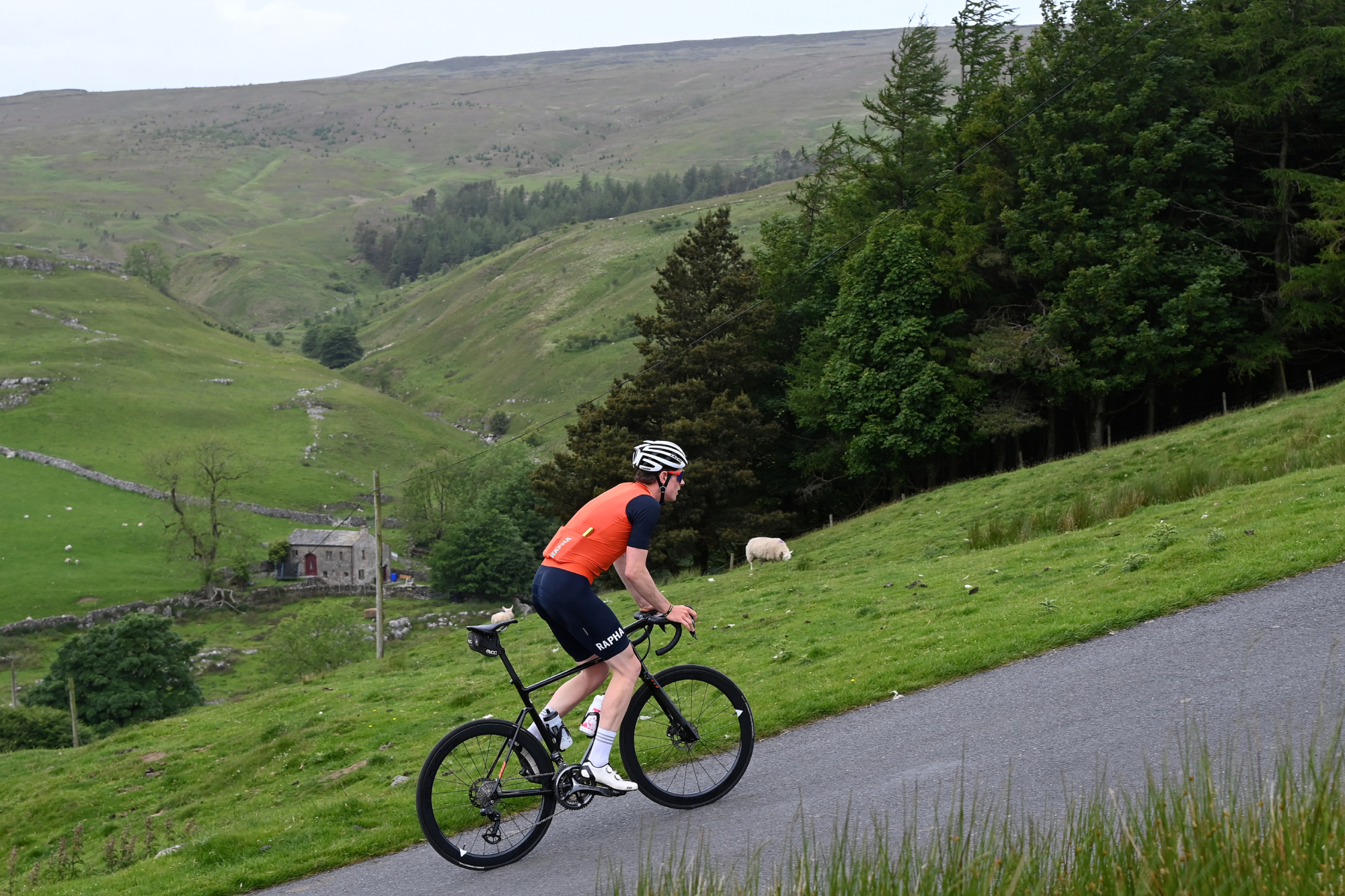Ask a coach: 'Why is it easier to hit higher powers uphill?'
It's not a coincidence that your best power numbers were mostly hit on climbs...


Have you ever noticed that most of your power PBs have been achieved riding uphill? There are a few reasons why it is much easier to hit higher power numbers going uphill – cycling coach James Spragg unpacks them...

Sports scientist and coach James Spragg is one of the experts who will be answering your questions in Cycling Weekly's ASK A CYCLING COACH series which comes out every Wednesday. Working both in research and applied settings, he currently runs Intercept Performance Consultancy.
Shopping trollies. No, I haven’t gone mad. Shopping trollies can illustrate why it’s easier to put our good numbers uphill. Imagine you have just done the weekly shop and are pushing your trolley through the car park. If that car park is completely flat, you need to push, but once the trolley is up to speed, it's relatively easy to keep it moving. Now imagine that the same car park is on a hill. If you're going downhill to your car, you will find that you need to push faster and faster if you want to keep applying that same force to the trolley as it took to get it moving! The trolley is literally running away from you. Now, in the opposite case, if you were pushing that laden trolley uphill you would need to apply a constant force to stop is rolling backwards!
The same is true on a bike. Power is force multiplied by cycling cadence. When you push on the pedals your bike accelerates. As it does so, you need to apply that same force quicker and quicker to keep up. Now of course on a bike, we have gears that help with this, but at a certain point the bike will be accelerating away faster than you can keep up and you won’t be able to apply force quickly enough to the pedals to keep up. This is what happens when you're going down a steep hill. Again, the exact opposite is also true. If you are climbing, then gravity is constantly slowing the bike down and giving you something to push against.
So it’s simply easier to put out power going uphill as you always have a resistance to apply force against.
Standing rather than sitting

Have you ever noticed that for the same speed, you are probably doing more watts when standing than sitting? And when do you stand the most? It certainly isn’t going downhill.
The penalty for standing is the smallest when going slower – i.e. when climbing! Thus, not only is it easier to put out power riding uphill but you can also do it in a way that maximises your ability to put out power.
The latest race content, interviews, features, reviews and expert buying guides, direct to your inbox!
So combine these two and you can start to understand why its far easier to hit those power PBs uphill than on the flat.
James Spragg is a sports scientist and coach, working both in research and applied settings. When not working with athletes James can be found skiing, climbing, cycling or drinking coffee!
Alongside Dan Lorang and Peter Leo, James runs Intercept Performance Consultancy. Over the last 8 years in various roles, as coaches, performance consultants, performance managers, and sports scientists, Dan, James and Peter have played a role in helping athletes achieve more than 10 World Championship titles, several Olympics medals (including a Gold and Silver Medal in Tokyo 2020) and several Top 5 results in some of the biggest sporting events on the planet (Tour de France, Olympics, World and European Championships). Our single focus is on improving performance in all settings.